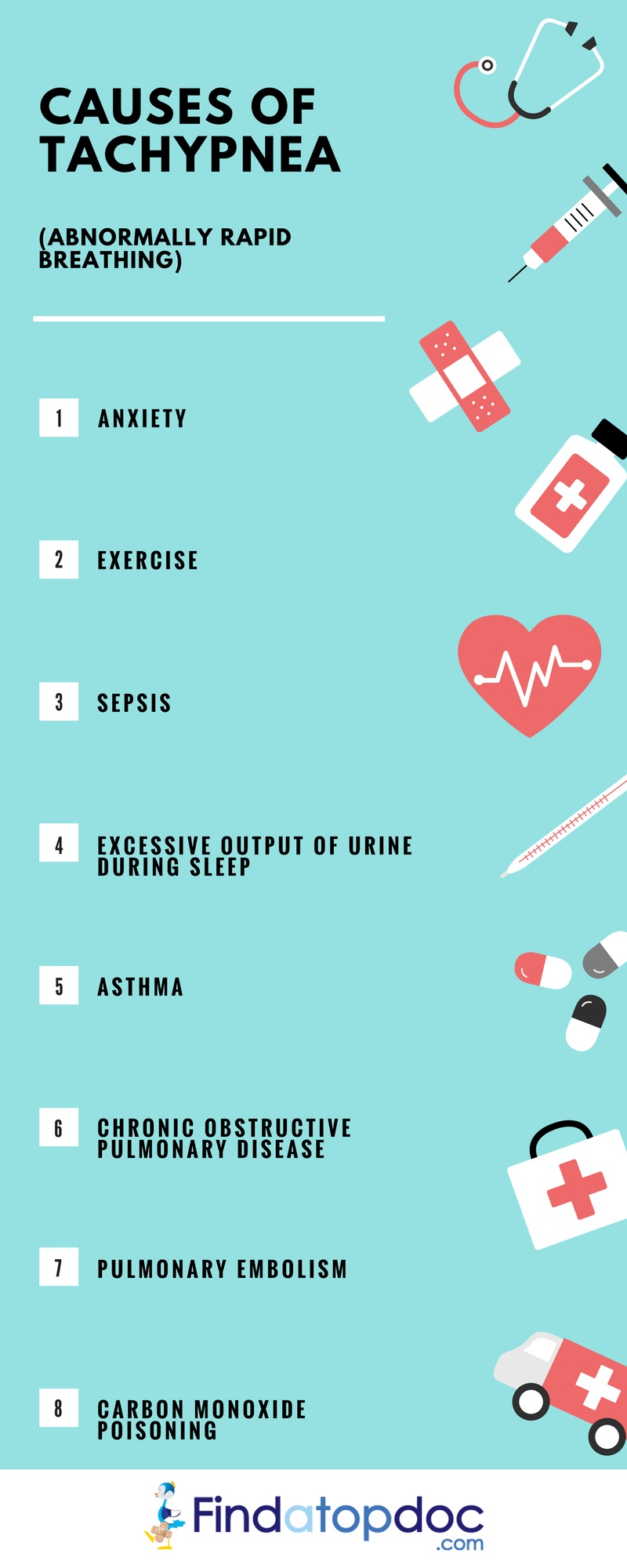
Source
Causes
Rapid, shallow breathing can be caused by infections, choking, blood clots, diabetic ketoacidosis, heart failure, or asthma.
Infections
Infections that affect the lungs, such as pneumonia or bronchiolitis, can cause difficulty breathing. This means shorter and more rapid breaths.
Choking
When you choke, an object partially or completely blocks your airway. If you can breathe at all, the breaths will not be deep or relaxed. In cases of choking, immediate medical attention is crucial.
Blood Clots
A pulmonary embolism is a blood clot in the lung. This can lead to hyperventilation, along with chest pain, coughing, and rapid or irregular heart beat.
Diabetic Ketoacidosis
This serious condition occurs when your body doesn’t produce enough insulin. As a result, acids called ketones build up in your body. This often leads to rapid breathing.
Symptoms
Obviously, the most pronounced symptom is breathing that is fast and shallow. When the lungs have too much carbon dioxide, it creates a feeling like you can't get enough air. Other symptoms may include a bluish-gray tint of the skin, nails, lips, or gums, lightheadedness, chest pain, fever, a chest that caves in with each breath, or breathing that gets worse over time.